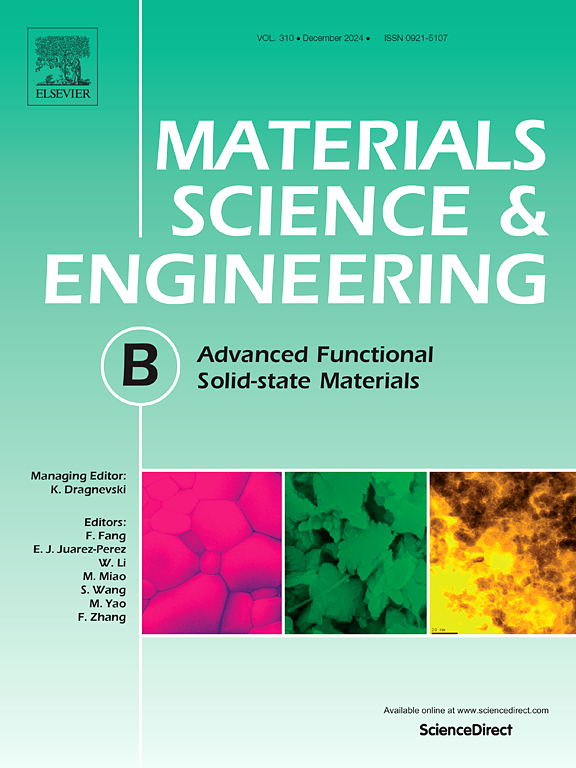A comparative study of stability, charge transfer estimation, opto-electronic and thermoelectric performance of HoNiAs and HoNiSb half-Heusler alloys
IF 4.6
3区 材料科学
Q2 MATERIALS SCIENCE, MULTIDISCIPLINARY
引用次数: 0
Abstract
This study presents a comparative analysis of the structural, elastic, electronic, thermal, and optical properties of HoNiAs and HoNiSb half-Heusler alloys to evaluate the effect of substituting arsenic (As) with antimony (Sb). Using DFT-based full-potential calculations, we observe that Sb substitution increases lattice parameters, bond lengths, melting temperatures, and enhances mechanical stability. Negative formation energies confirm thermodynamic stability, while band gap values of 0.35 eV for HoNiAs and 0.41 eV for HoNiSb reveal their semiconducting nature. Both compounds satisfy the Born stability criteria and exhibit brittle, anisotropic behavior. Covalent bonding between Ni and As/Sb is evident in the charge density. Optical properties show strong absorption in the visible to near-infrared range, suggesting potential in photovoltaic and photodetector applications. HoNiSb demonstrates improved thermoelectric performance with a Seebeck coefficient of 160 μV/K and a high-power factor of 14 × 1011 W/mK2 s at 1200 K, making both alloys suitable for high-temperature thermoelectric applications.
HoNiAs和HoNiSb半heusler合金的稳定性、电荷转移估计、光电和热电性能的比较研究
本研究对HoNiAs和HoNiSb半heusler合金的结构、弹性、电子、热学和光学性能进行了比较分析,以评价用锑(Sb)取代砷(As)的效果。通过基于dft的全势计算,我们观察到Sb取代增加了晶格参数、键长、熔化温度,并增强了机械稳定性。负的形成能证实了它们的热力学稳定性,而HoNiAs的带隙值为0.35 eV, HoNiSb的带隙值为0.41 eV,显示了它们的半导体性质。这两种化合物都满足玻恩稳定性标准,并表现出脆性和各向异性行为。Ni和As/Sb之间的共价键在电荷密度上是明显的。光学性质在可见光到近红外范围内表现出很强的吸收,表明在光伏和光电探测器方面的应用潜力。在1200 K时,HoNiSb合金的塞贝克系数为160 μV/K,功率因数为14 × 1011 W/mK2 s,热电性能得到了改善,这两种合金都适用于高温热电应用。
本文章由计算机程序翻译,如有差异,请以英文原文为准。
求助全文
约1分钟内获得全文
求助全文
来源期刊

Materials Science and Engineering: B
工程技术-材料科学:综合
CiteScore
5.60
自引率
2.80%
发文量
481
审稿时长
3.5 months
期刊介绍:
The journal provides an international medium for the publication of theoretical and experimental studies and reviews related to the electronic, electrochemical, ionic, magnetic, optical, and biosensing properties of solid state materials in bulk, thin film and particulate forms. Papers dealing with synthesis, processing, characterization, structure, physical properties and computational aspects of nano-crystalline, crystalline, amorphous and glassy forms of ceramics, semiconductors, layered insertion compounds, low-dimensional compounds and systems, fast-ion conductors, polymers and dielectrics are viewed as suitable for publication. Articles focused on nano-structured aspects of these advanced solid-state materials will also be considered suitable.
 求助内容:
求助内容: 应助结果提醒方式:
应助结果提醒方式:


